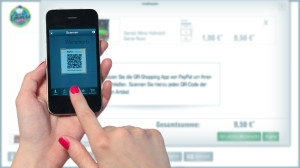June 23rd, 2014 by Elma Jane
Effective leaders can achieve better results in both their professional and personal lives by making a simple shift in their approach to leadership. The shift involves seeing one’s self not as a manager, but as a servant. Though it might sound counter intuitive, learning how to obey and follow, today’s business leaders can hold greater sway over those they’re positioned to lead. Clearly, We need to set clear expectations for excellence and let people know that they will be held accountable to those expectations. However, leaders who make serving and caring for the people they lead a higher priority than what they can get out of them typically end up getting better results than those who take the opposite approach.
Adopting a servant leadership approach can improve any business’s bottom line.
Achieving (a different kind of) success
Being a servant leader simply means that serving and caring for people is higher priority than profit. The servant leader knows that this change in priority is actually the best way to ensure long-term growth and profitability. Shifting the priority of your business away from profit means establishing different criteria for success. Success through the servant leadership lens, can be assessed by answering these three questions:
How much are the people I lead growing, both professionally and personally, as a result of being on my team?
How much do the people I lead enjoy coming to work each day?
How well am I empowering the people on my team to be servant leaders?
Building a strong culture
When we create a team culture where serving each other and the community around us is valued as more important than profit, we give the people we lead the gift of being part of an inspiring organization that people want to be a part of and don’t want to leave. This is why a relatively unknown company is able to attract roughly 18,000 people to apply for 35 positions, a hire rate of 0.2 percent. It’s also why turnover is around 1 percent, versus the industry average in the tech space of 22 percent.
Gaining purpose
Imagine that your purpose for coming to work isn’t just to be a manager and accomplish business objectives. Imagine that your main purpose for coming to work is to create a team of awesome human beings of high character, who are devoted to serving and caring for the people around them. This makes Mondays just as happy as Fridays. It makes coming to work something deeply meaningful and inspiring.
Improving customer service
When we model empathy, compassion and helpfulness, we create a culture that is likely to deliver world-class service to our customers. This is why companies work so hard to develop servant leaders who treat employees with such high levels of care.
Increasing innovation
When we create an atmosphere of safety, where people aren’t afraid to take risks and challenge the status quo, we create a culture that is highly conducive to innovation. This is why the most innovative companies like Google and SAS go to such lengths to care for employees and are also consistently rated as the best places to work.
Posted in Uncategorized Tagged with: google, innovation, SAS
September 30th, 2013 by Elma Jane
Future of Marketing Lies in Mobile Payments…Why?
Marketing and payments might seem like strange bedfellows to the average retailer, but in fact, they are converging rapidly to bring more value to consumers and merchants alike. Here are 10 reasons why the future of marketing is inextricably linked to payments innovation:
1. Cross-Platform Acceptance
Better yet, these targeted offers can be acquired and redeemed through different mediums…online, offline and mobile…and utilized interchangeably. This makes life easier on the consumer and thus makes them more likely to engage with new loyalty and rewards programs. Moreover, as the Internet and mobile solutions continue to merge, the digital “wallets” that many of us use online today (think PayPal) are, logically, moving to our phones. When these payment and marketing applications are accessible from the same device, customers can seamlessly receive pertinent offers and pay for goods at the same time in the same place. Other apps will give consumers the ability to shop in one medium and buy in another, simplifying omni-channel marketing to affect commerce across all channels. This kind of convenience and value is a win for both customer and merchant.
2. Loyalty and Rewards get Simpler
The reality is that it’s much easier to issue and redeem loyalty rewards, gift cards and discounts when they are integrated into the POS experience and don’t require customers or merchants to alter the existing in-store purchase or checkout stream. You can see these simplified applications already in practice at chains like Starbucks, as well as independent merchants that use systems like LevelUp.
3. Merchant adoption
The payment technologies that succeed will be the ones that are ultimately adopted by merchants, which in turn will lead to consumer usage. Key technologies that will likely facilitate widespread adoption of mobile payments…either proactively because merchants want to see what they can offer them, or passively as they upgrade devices…include:
EMV (chip and pin), which will force merchants to update their POS systems, likely catalyzing them to update all points of interaction.
NFC – Cloud Computing – Geofencing – QR Codes and even Basic Bar Codes
4. More Value for Consumers
And for consumers, the convergence of payments and marketing should deliver highly valuable deals, offers, comparisons information and more, ultimately providing drastic improvement of the buying and shopping experience.
5. More Value for Merchants
So what does this value look like? For merchants, the convergence of payments and marketing should bring in new customers, increase sales from existing customers, and provide more customer data. It should also create a more streamlined multi-channel experience so consumers have little barrier to adoption.
6. No Single Technology will Win
These new technologies introduce an interesting question: What should merchants do to prepare for this brave new world where payments and marketing collide? For one, merchants should avoid betting on any one technology. In fact, the POS needs to morph into something a little more complex, becoming instead a POI, where a broad variety of payment types, loyalty programs, coupons and more can be redeemed. Merchants should be in a position to choose what types of payment they want to accept and in what medium, and not be limited to fixed payment tenders.
When the convergence of marketing and payments will happen
The increasing adoption of mobile payments by merchants and consumers, when combined with new POS environments, will jump-start the convergence of marketing and payments. However, we’re still in the early stages.
Mobile commerce technologies are widespread but still working to gain traction from consumers en masse. Additionally, merchants haven’t yet felt the need to upgrade their POS systems to accept mobile payments
However, the October 2015 EMV Liability Shift, a date set by Visa and MasterCard for certain charge-back liabilities to fall to the merchant unless they have upgraded to EMV-capable POS systems, is likely to push merchants to upgrade their systems.
Once merchants begin to upgrade these POS systems, the smart ones will take the opportunity to add more features and functionality to the systems, including the ability to accept payment…and marketing-driven solutions from mobile handsets. That’s when we’ll see the value of two-way communication between merchants and consumers dramatically change the shopping experience and bring payments into the marketing mix.
7. Smartphone Adoption is Speeding Up
Consumers’ mobile phones are already equipped to deliver highly valuable offers, and adoption is increasing at a rapid pace. Smartphones bring with them new app technologies that include not only mobile payments but also loyalty and rewards programs that are designed to drive preference for stores, good and services.
8. Targeted Offers and Single-Use Applications
Of course, these solutions are still in their infancy. Elegant single-use applications, such as mobile wallets and gift cards, will soon grow to provide highly targeted offers that take into account everything from shopping preferences to location, providing incentives as a customer walks the aisle of a store. Just about every player in the payments ecosystem is thinking about these new commerce technologies. The winners will be those that demonstrate clear value for both the merchants and customers.
9. The “POS” is now a “POI”
A point-of-sale (POS) solution used to be a place where goods were purchased and money traded hands. Usually, this took the form of a cash register or credit card machine. Though these still exist, a wave of new value-added marketing services, such as targeted offers, discounts and highly valuable loyalty applications, have led to the transformation of the POS into a point-of-interaction (POI), a place where consumers and merchants meet to exchange value for value.
10. Two-way communication
When embedded in smartphones, new technologies…like near-field communication (NFC), QR codes, geofencing and cloud authentication solutions…allow for two-way communication between the consumer and the POS solution, enabling merchants to deliver coupons and offers directly to customers’ mobile phones through targeted integrated programs.
Posted in Digital Wallet Privacy, e-commerce & m-commerce, Mobile Payments, Mobile Point of Sale, Smartphone Tagged with: bar codes, cloud, device, EMV, handsets, innovation, loyalty, marketing, merchants, mobile, nfc, offline, omni-channel, online, payments, PayPal, phones, POI, point of interaction, POS, qr codes, rewards

